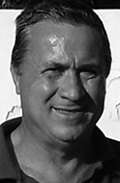
Geografía insólita del Imperio español
un viaje por la geografía mundial en busca de los vestigios más desconocidos del imperio español
Sánchez, Jorge (1954- )
Did you know that Spain ruled more than half of today's United States of America? Or that Fray Junípero Serra is the only Spaniard represented in the Washington Capitol? Did you know that the Manila Galleon crossed the Pacific Ocean for two hundred and fifty years, from the Philippines to Mexico, making the largest trade route in the world? And that this ocean was a "Spanish lake" for more than three hundred years? Delve into a formidable journey from Puerto Rico to Equatorial Guinea, from Flanders to Guam, with the exotic Mariana Islands, the Carolinas and the Philippines, in search of the unknown vestiges of the Spanish Empire. These pages reveal the glory of an empire that knew no borders, dodged seas and oceans and discovered two continents for the Western world: America and Oceania. It all started with the first voyage to America of the navigator Christopher Columbus in 1492, and concluded in 1976, when Spain withdrew from the Spanish Sahara. During those five hundred years the Spanish language expanded in such a way that today it is the second most widely spoken of humanity, only behind Chinese. Wherever the Spaniards settled, culture was cultivated by building universities, the humanitarian laws of Burgos professor Francisco de Vitoria were observed, and the Catholic faith was imparted. The author, a passionate traveler who knows all of the one hundred and ninety-three countries registered with the United Nations, has systematically toured, one by one, the fifty possessions that Spain came to administer around the world, from Easter Island to Taiwan and from the Moluccas to Equatorial Guinea.
- Author
-
Sánchez, Jorge (1954- )
- Subject
-
History
> History of Spain
- EAN
-
9788418709067
- ISBN
-
978-84-18709-06-7
- Edition
- 1
- Publisher
-
Almuzara
- Pages
- 248
- High
- 24.0 cm
- Weight
- 15.0 cm
- Release date
- 27-04-2021
- Language
- Spanish
- Series
- Historia



